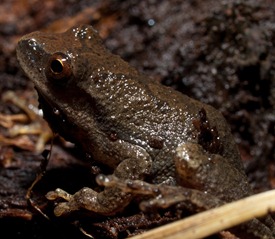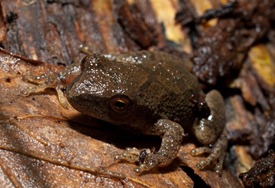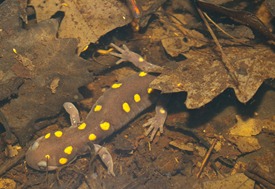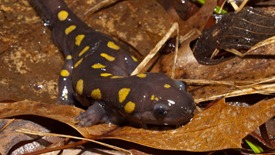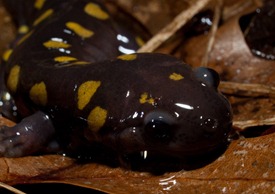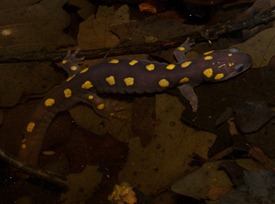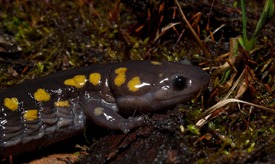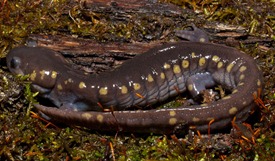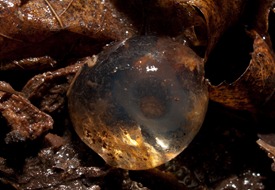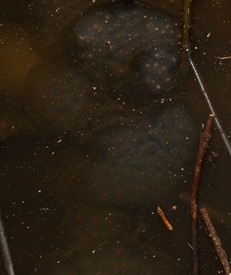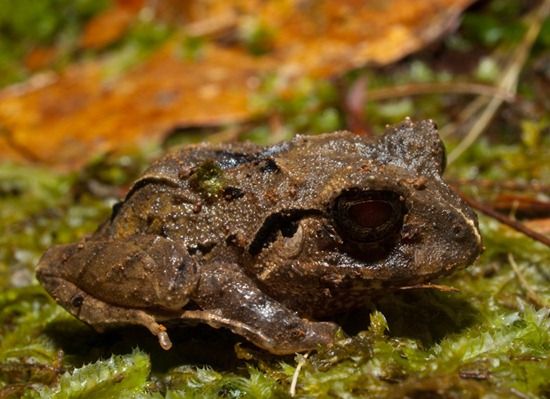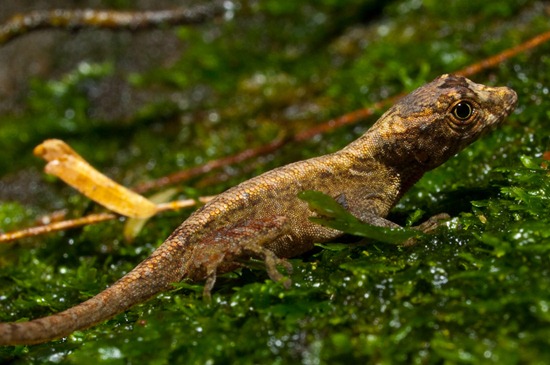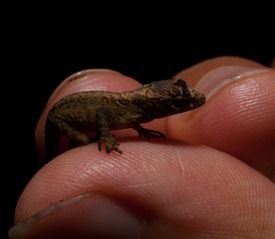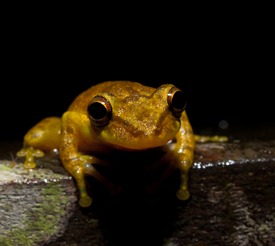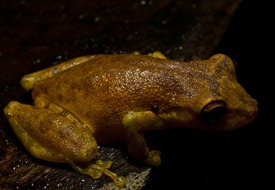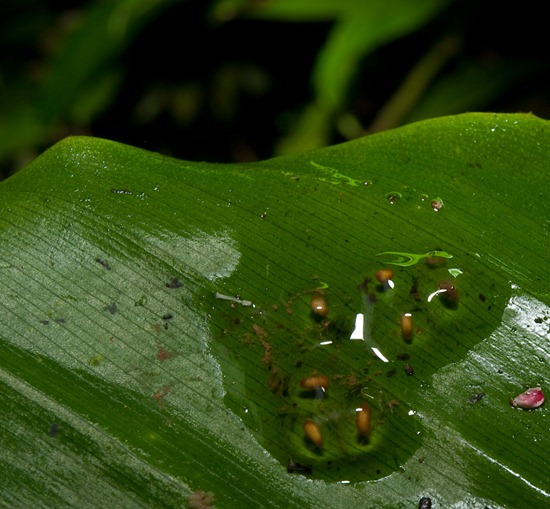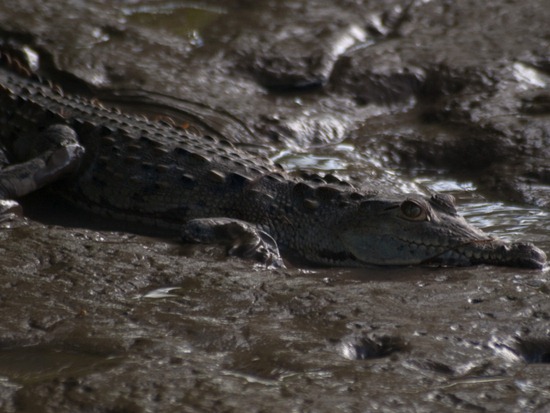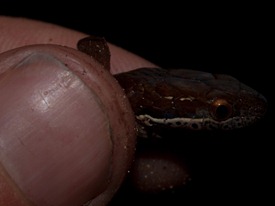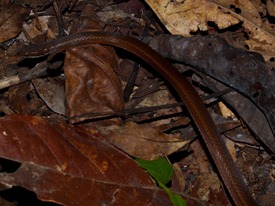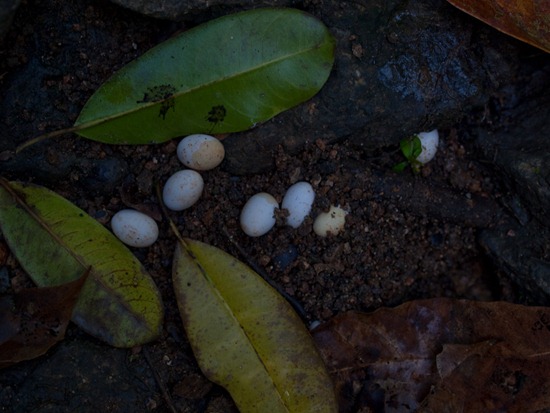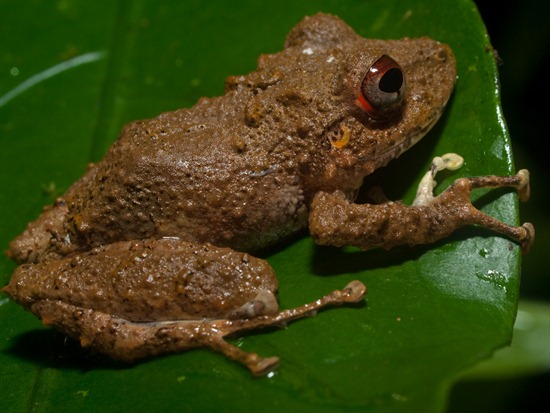Although there were a few instances when wood frog calls were heard, the only species of anuran we caught or saw at this week’s trip to Cuyahoga Valley National Park was Psuedacris crucifer. Unfortunately, the frogs did not seem to be as active or abundant this year as in the past, when we would regularly see peepers calling, wood frogs mating (even with green frogs), and hear little else than a deafening buzz of frog calls.
Tag Archives: Herps
Spotted Salamander Hunt
Last Tuesday, several students, Doug, Nate, Dan, Allison and myself (totaling 15!) went to a secret vernal pool in Cuyahoga Valley National Park (well, maybe it’s not very secret) to observe spotted salamanders. We encountered plenty of spotted salamanders, a red-spotted newt, and spring peepers. It was an exciting night, and there were several enthusiastic photographers present (I think four people had dSLRs) so I hope to see some photographs other than my own.
Below are some spotted salamander pictures, posed and unposed.
We also found some eggs in and around the woodland wetland. There seemed to be two types: one type found under logs with more or less a single eggs surrounded by gelatin, and a second type in the water with many eggs encased in a single, gelatinous, cresent-shaped mass. Although I’m certain that the later are spotted salamander eggs, I’m unsure about the former, but I would still argue that they are Ambystoma given their size.
Craugastor megacephalus
A common litter-dwelling frog, Craugastor megacephalus has recently been moved to a new family, Craugastoridae (formerly Leptodactylidae). It’s cranial ridges and warty-appearing skin are generally thought of as toad characteristics, but this rain frog lacks large, poison-secreting, parotiod glands behind the eyes.
This individual was caught along side the Norops humilis in La Selva.
Juvenile Norops
Hyla phlybodes
In early January, the Canta Rana wetland in La Selva was alive with a tiny, yellow hylid. Since I didn’t take proper pictures for identification, my best guess is Hyla phlybodes; it’s supposedly common both in the region and the reserve itself, and can be frequently heard calling around that time of year.
The other magnificent frog at the wetland you’ve already seen.
Centrolenid or Hylid eggs
American Crocodile
Coniophanes fissidens
One of two snakes we saw, Coniophanes fissidens is a somewhat dull, rear-fanged, litter-dwelling snake. Another species in the same genus, Coniophanes piceivittis, is common in Palo Verde and packs a mean bite.
Unknown Huevos
Near the waterfall pictured yesterday, I discovered several eggs exposed in the stream bed. They are no doubt reptilian, but I’m not positive which type. Given the great abundance of Basilisca vittatum (Jesus Christ Lizard or basilisk) surrounding the stream, the size, and the general lack of turtles, I’d guess they are from a basilisk. Further, given that the eggs are exposed, they are unlikely to be viable… que triste.

